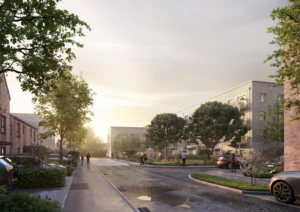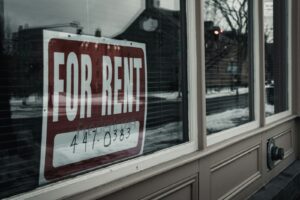One of the main objections from communities who have undergone gentrification is that they feel their voices haven’t been heard.
25-year-old filmmaker Shane Duncan aimed to rectify that through a documentary about his home called This is Brixton.
Over the past decade, young professionals and boutique coffee shops have moved into Brixton, and the area now buzzes with fresh wealth. But for many longer-term residents these changes have brought an uncertain future.
According to Zoopla, the average price of a house there has almost doubled since 1998, and the film highlights the fears of many that they will eventually be pushed out.
Even though many of these changes In Brixton have been visible, Shane believes that much is often left unsaid about regeneration and its closely entwined stepbrother, gentrification.
‘Gentrification is a topic that wants to be hidden,’ he says.
‘It’s an important topic because a lot of people are unaware of it. They can now watch something and research for themselves to see how they feel about it.’
Poster child for gentrification
Following Hackney and Shoreditch’s time in the sun, Brixton has become the new poster child for gentrification in London, and the film asks residents how they feel about the changes and what they think might come next.
‘I knew what I’d heard about gentrification, that it was a bad thing and so forth, but I felt I had to find out for myself,’ says Shane.
What he found was a passionate and frustrated community who feel Brixton’s identity is at stake.
As the money has seeped into Brixton, it’s clear they feel like their sense of agency about where they live has been stripped away, with many now insecure about their long-term future there.
It’s an anxious time for businesses, too. Sports Direct opened up this year after the company bought out the units on Popes Road, once home to several independent stores. Network Rail also announced a controversial redevelopment of some railway arches which previously reverberated with independent retailers and traders.
In partnership with Lambeth Council, they are evicting over 30 units. Right of return is promised, but with rents 300% higher than what they currently pay, this will be impossible for many businesses.
‘A lot of people felt cheated out of their space so new people can come in,’ says Shane.
‘Businesses that have been there for years have now had to close down,’
‘The new people, who can afford the rents, have taken spaces of other people who have been here for years. Now they have a bad relationship with the area because of how they’ve come in.
‘People are against them straight away. That’s not how a business should come into an area.’
Change is coming
One voice that stands out in the film is the writer Alex Wheatle. Even though he laments the loss of Brixton’s previous identity, he admits that it’s now a much more welcoming place to visit, and proponents of regeneration there will say that there is a danger Brixton’s often troubled past can be romanticised.
‘With Brixton, they’ve had riots and their bad times,’ says Shane.
‘A lot of hardship has transited from that time until now. Some people are stuck in the past and they might not feel welcome or part of the community.’
‘But there should be more help for these businesses who are already there so they can keep up with the times. Even a lick of paint or updating the windows. Small changes can make a big difference.’
Shane has already made a follow-up film called This is Peckham, with contributors there offering softer responses to questions around regeneration and gentrification.
‘Making both films and speaking to people at both places, you can see the mood is different,’ he says.
‘There is togetherness in Peckham, and the youth and older generations mix more, where in Brixton that doesn’t happen at all.’
Shane believes people in Peckham are more open to change and understand if they want their area to thrive they need new businesses to come in.
‘If you know change is coming, move with it before it takes you out,’
‘Then you’re on the other side. If you don’t adapt then, unfortunately, you’re going to be left behind,’
‘With Peckham, they have groups who are well connected to the council, but I’m not sure there’s such a presence in Brixton. I could see a difference with how strong the community is with the local council. In Brixton, there’s a disconnect.’
How Brixton can save itself
Shane DuncanShane hopes the film will become a visual document of Brixton, so in 10 years time, people will be able to look at the impressive aerial shots and see how it’s developed.
He also hopes for a more inclusive Brixton, because as the 2011 riots showed, divisions in the community can have disastrous consequences.
‘For Brixton, I hope it can rectify itself and for developers and the council to see where they’ve gone wrong. They need to help smaller businesses grow by bringing the community and local people together. Otherwise, the rifts will continue,’
‘When the riots happened, shops that were favoured by the locals weren’t touched. That says it all. If the opportunity comes you can see what might come of it. If everyone is aligned and everyone’s happy then people wouldn’t feel like they’d have to attack stores. Without inclusion, there’s always going to be a problem,’
‘It’s never too late to make a change. That’s my hope for Brixton, that it becomes a place where a community is open to change yet they get to have their say and input. Then Brixton can save itself.’
Watch This is Brixton below


















Leave a Reply